 Essay Writing Web
Essay Writing Web

 05-09-2024
05-09-2024
 Essay Writing Web
Essay Writing Web
Badminton is a fast-paced and exhilarating racket sport that has gained immense popularity worldwide. Played both recreationally and competitively, it offers a blend of physical agility, strategic thinking, and quick reflexes. However, the modern version of the game was formalized in England during the 19th century, taking its name from Badminton House, the estate of the Duke of Beaufort, where the sport gained prominence.
Unlike other racket sports, badminton is unique in its use of a shuttlecock, a feathered projectile that players hit back and forth over a net. The lightness of the shuttlecock, combined with the speed and intensity of the rallies, requires players to be not only physically fit but also mentally sharp, as each shot can shift the momentum of the game.
Badminton is played in both singles and doubles formats, with players or teams aiming to score points by landing the shuttlecock in their opponent’s court. Matches are typically played to 21 points, with players needing to win by a margin of at least two points. The sport is particularly popular in Asia and Europe, with countries like China, Indonesia, India, and Denmark producing many of the world’s top players.
As a sport that promotes cardiovascular fitness, hand-eye coordination, and strategic play, badminton is not only a competitive game but also an enjoyable way to stay active. Whether played casually in backyards or on the world stage at the Olympics, badminton continues to captivate players and fans alike with its dynamic and fast-paced action.
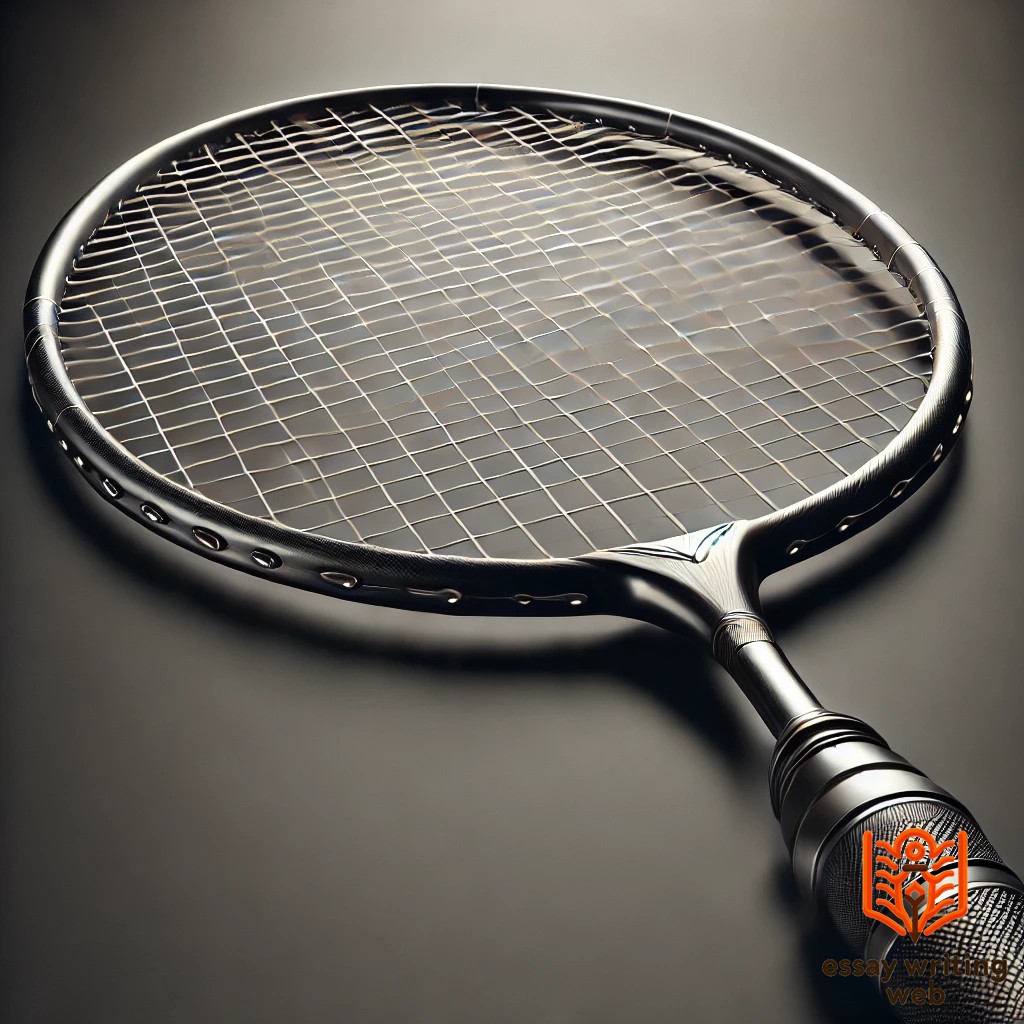
The badminton racket is one of the most crucial pieces of equipment in the game. Typically made from lightweight materials such as carbon fiber or graphite, it allows players to maneuver quickly and generate powerful shots. The racket consists of three main parts: the head, the shaft, and the handle. The string tension can be adjusted to suit different playing styles, with higher tension providing more control and lower tension offering more power. Rackets come in different weights and sizes to cater to individual preferences.
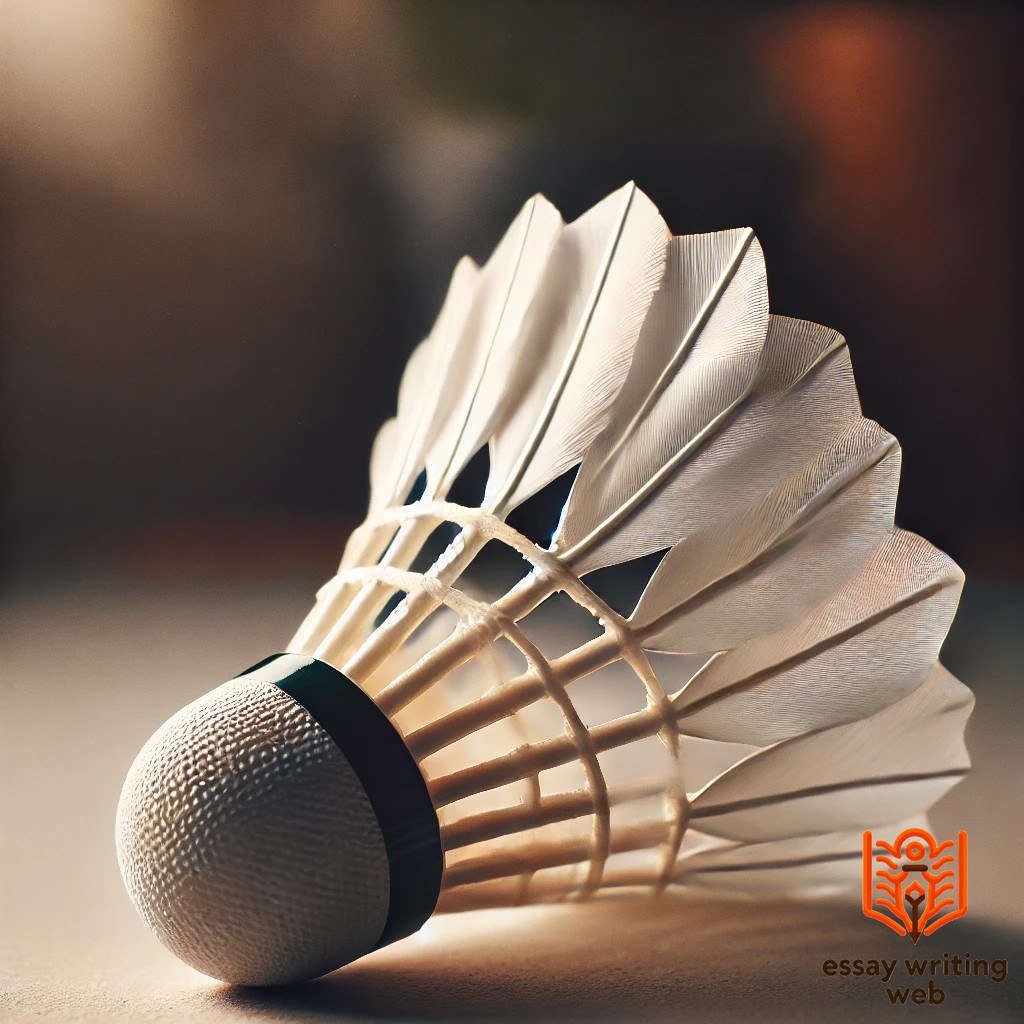
The shuttlecock, often called a "birdie," is the unique projectile used in badminton. It is made from 16 overlapping feathers fixed into a cork base, although synthetic versions are also available. The design of the shuttlecock causes it to decelerate quickly when hit, making it essential for players to use quick reflexes and precise shots. The feathers ensure stability in flight, and the cork base allows for consistent impact with the racket.

The badminton net separates the two sides of the court and serves as a central feature of the game. The net is made from a mesh material, usually nylon or polyester, and is attached to posts on either side of the court. The height of the net is 5 feet 1 inch at the edges and 5 feet in the center. The net's width spans the entire court, allowing players to perform a variety of shots, including smashes, clears, and drop shots, over the barrier.

Proper footwear is essential in badminton due to the sport’s emphasis on quick lateral movements, sudden stops, and jumps. Badminton shoes are designed with non-marking rubber soles to provide excellent grip on indoor courts, minimizing the risk of slipping. The shoes are lightweight and offer ample cushioning to protect the feet and joints from the impact of sudden movements. Good ankle support is also crucial, as the sport requires constant changes in direction.
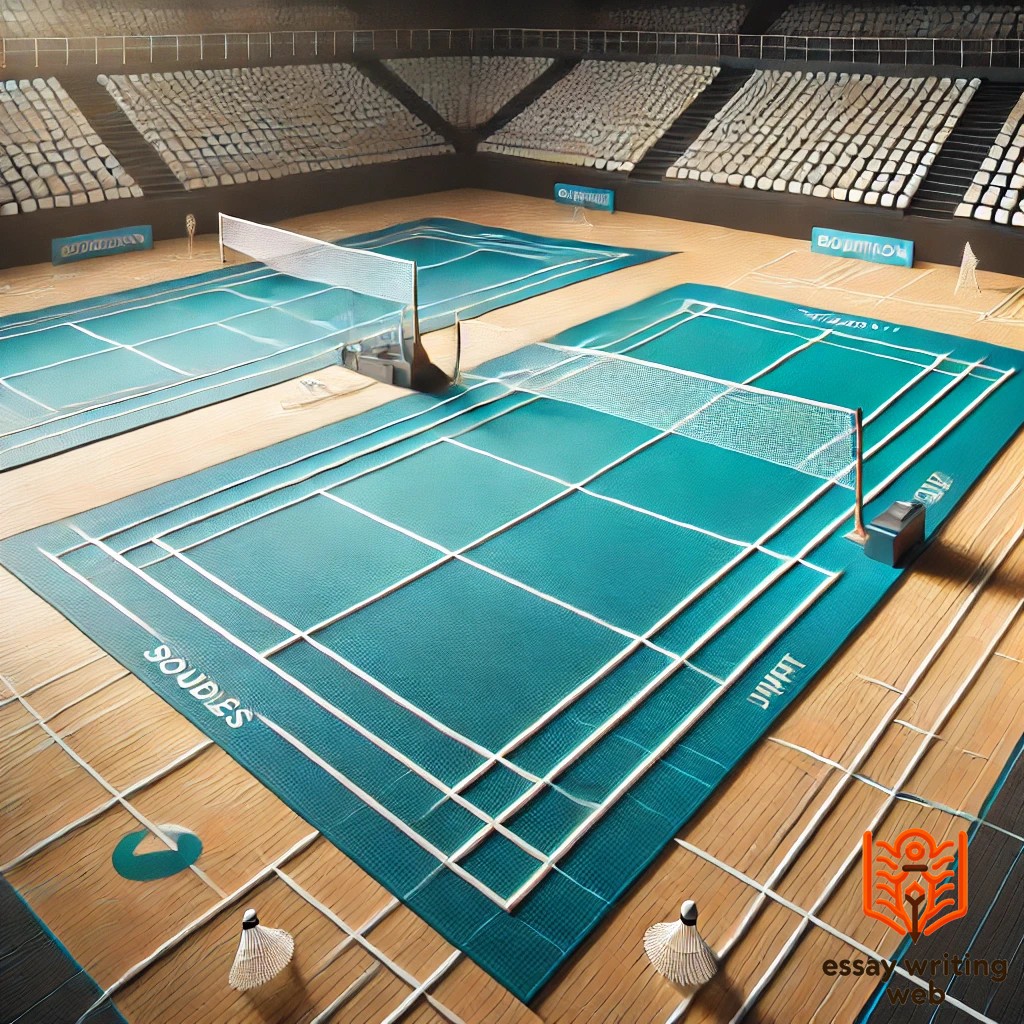
The badminton court is rectangular and marked with specific lines that define the playing area. The dimensions of the court for singles matches are 13.4 meters long and 5.18 meters wide, while for doubles matches, the width extends to 6.1 meters. The court is divided into halves by the net, and additional lines mark the service areas. The surface of the court is typically made of wood or synthetic materials, providing a smooth and stable surface for play.
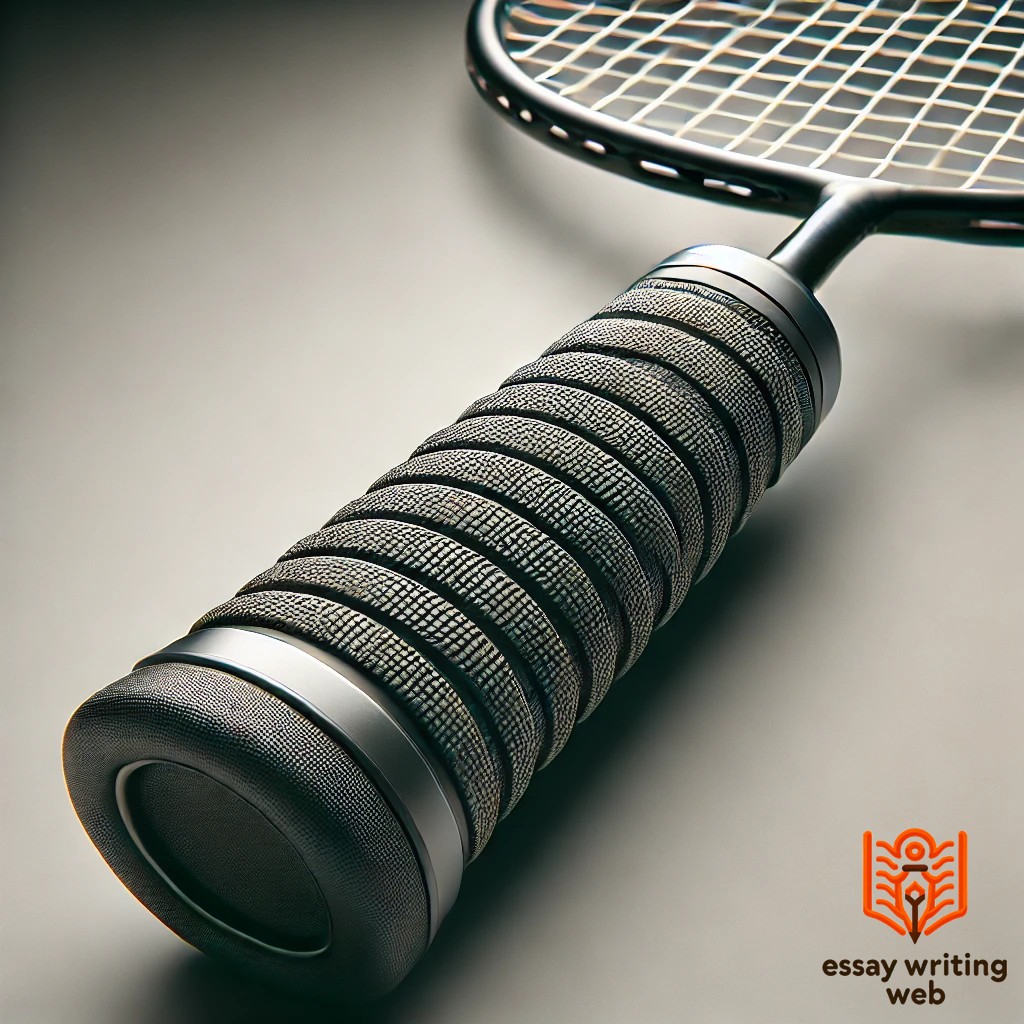
The handle of the badminton racket is often wrapped in grip tape to provide players with better control and comfort. Grip tape comes in different materials such as rubber, towel, or synthetic leather. Players may choose grip tape based on personal preference, as it affects the feel and handling of the racket. Over time, grip tape may need to be replaced due to wear and tear.
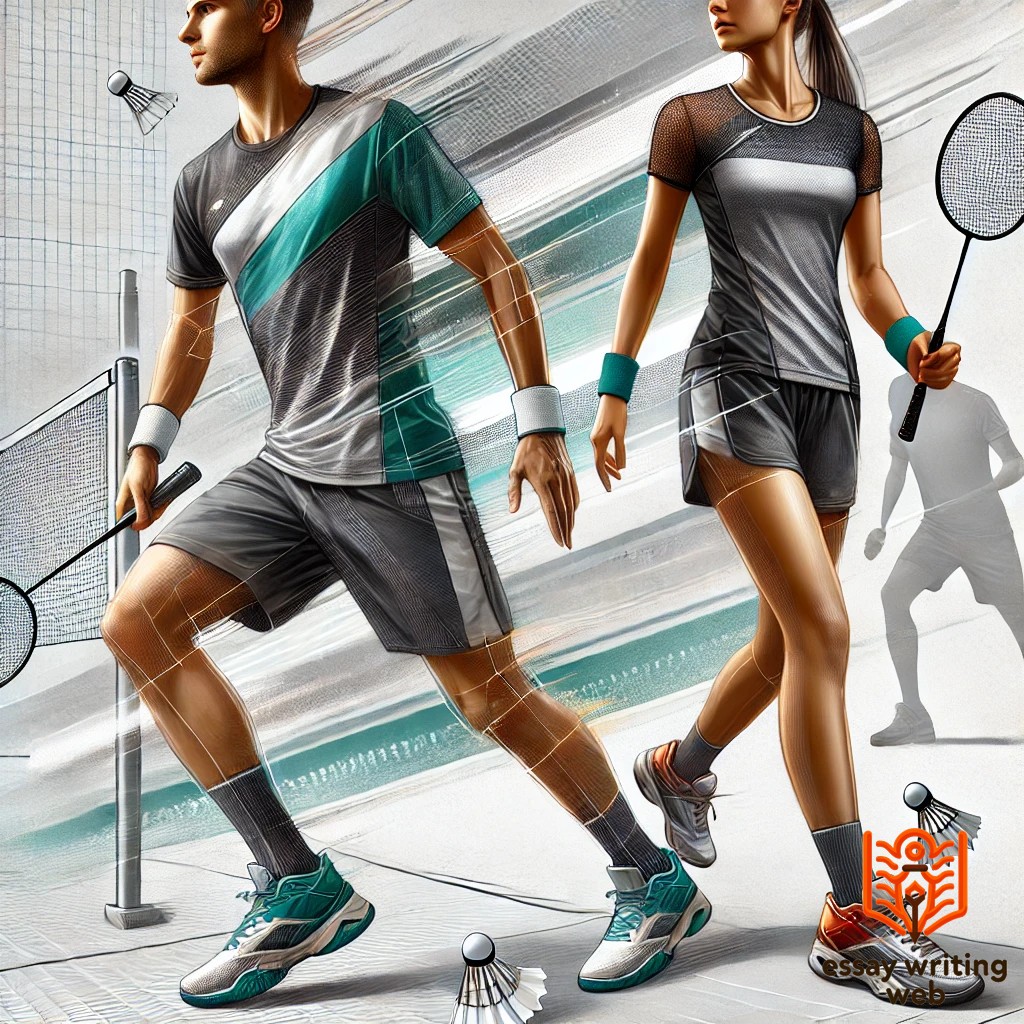
Players typically wear lightweight and breathable clothing to allow for maximum flexibility and comfort during matches. This usually consists of shorts, skirts, and T-shirts or tank tops made from moisture-wicking materials to keep players dry. In professional and competitive settings, teams often wear uniforms to distinguish themselves from opponents. The attire must also allow for freedom of movement, as badminton involves rapid changes in direction and frequent jumping.
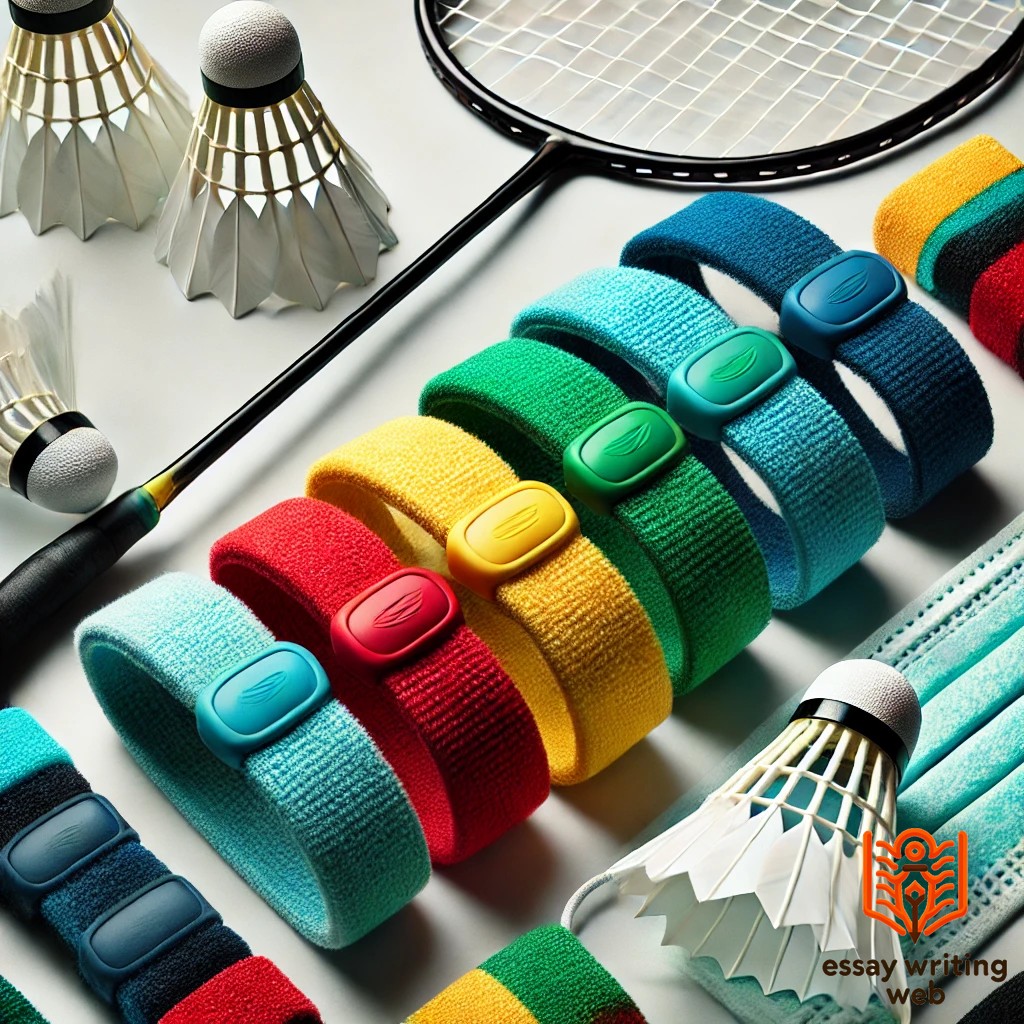
Accessories like wristbands and headbands are commonly used by players to help absorb sweat and keep it from affecting their grip or visibility during a match. Wristbands can also provide additional support to the wrists, reducing the risk of injury during intense rallies.
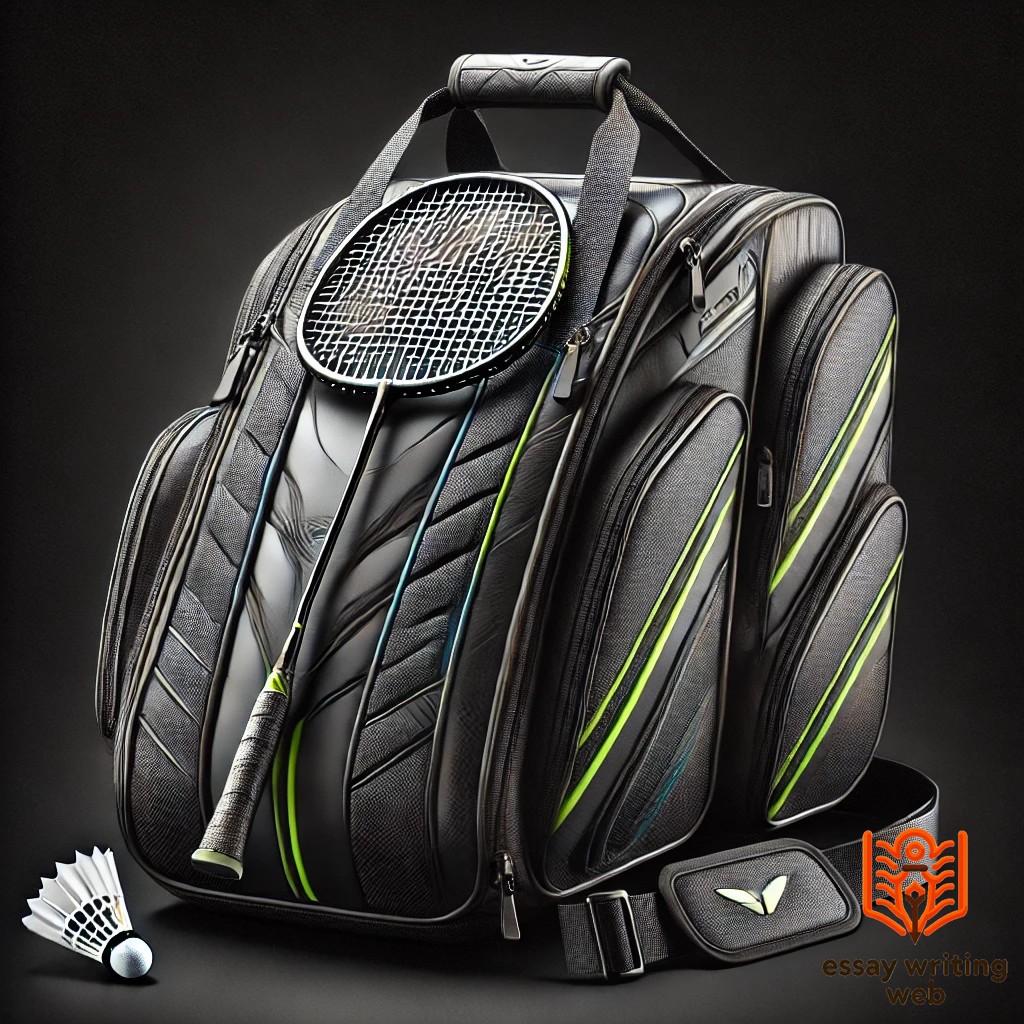
A badminton bag is used to store and carry equipment such as rackets, shuttlecocks, shoes, and other accessories. These bags are designed with compartments to protect rackets from damage and to keep other items organized. They are essential for players who travel to tournaments or practice sessions.
Badminton, like any other sport, has its own set of terms and vocabulary that players and fans must understand to fully appreciate the game. These terms help describe various aspects of the sport, from shots and tactics to scoring and rules. Here are some of the most popular terms used in badminton.
Badminton, like any other sport, has its own set of terms and vocabulary that players and fans must understand to fully appreciate the game. These terms help describe various aspects of the sport, from shots and tactics to scoring and rules. Here are some of the most popular terms used in badminton.
The smash is one of the most powerful shots in badminton. It involves hitting the shuttlecock downward with great force, aiming to make it difficult for the opponent to return. Smashes are usually performed from a high position and are considered offensive shots, often used to finish a rally and win the point.
A clear is a defensive shot where the player hits the shuttlecock high and deep into the opponent's court. This allows the player more time to recover and prepares them for the next shot. Clears can be classified into two types: attacking clears, which are faster and more direct, and defensive clears, which are slower and travel higher, giving the player more time.
A drop shot is a delicate, soft shot where the shuttlecock is hit just over the net and lands close to it on the opponent’s side. It requires precision and finesse, as the goal is to catch the opponent off guard by making them rush forward to reach the shuttle. Drop shots are often used to change the pace of the game and break an opponent's rhythm.
A drive is a fast, flat shot that travels parallel to the ground, aimed at forcing the opponent to react quickly. Drives are often used in doubles, where quick exchanges are common, and the shuttle is kept low to avoid giving the opponent the opportunity to smash.
Badminton uses the rally point scoring system, where a point is awarded to a player or team after every rally, regardless of which side is serving. A match is played to 21 points, and a player or team must win by at least two points. If the score reaches 20-20, the game continues until one side leads by two points, or the game is won at 30 points.
A fault is a violation of the rules in badminton that results in the opponent being awarded a point. Common faults include hitting the shuttlecock out of bounds, touching the net with the racket or body, serving incorrectly, or the shuttlecock hitting the ground before being returned.
A "let" is called when a rally is stopped and replayed due to an unforeseen or accidental interruption, such as when the shuttlecock gets stuck in the net or if there is a disagreement about the score. No points are awarded, and the rally is replayed from the same serve.
A net kill is an aggressive shot executed very close to the net, where the player taps or pushes the shuttlecock downward into the opponent's court, often ending the rally. It requires quick reflexes and precision, as the shuttlecock must be hit before it drops too low.
In badminton, footwork refers to a player's movement across the court to position themselves correctly for a shot. Proper footwork is critical in badminton, as the game requires quick changes in direction and speed. Good footwork helps players conserve energy and maintain balance while executing their shots.
The flick serve is a deceptive serve where the server appears to be delivering a short serve but instead uses a quick wrist action to send the shuttlecock high and deep into the opponent's court. It is often used in doubles to catch opponents off guard who are expecting a short serve.
A backhand is a shot executed with the racket hand facing away from the shuttlecock, using the back of the hand to hit the shuttle. Backhand shots can be challenging, but they are essential for handling shuttlecock returns on the non-dominant side of the body.
Deception refers to the act of misleading the opponent by disguising the type or direction of a shot until the last moment. Deceptive shots, such as pretending to smash but executing a drop shot instead, can catch opponents off guard and force them into making mistakes.
The baseline is the back boundary line on both ends of the court. Players must keep the shuttlecock within the baseline during rallies, and hitting the shuttle out beyond this line results in a fault and point for the opponent.
A lift is a shot where the player strikes the shuttlecock in an upward trajectory, sending it high and deep into the opponent's court. Lifts are used defensively, usually when the player is under pressure, to buy time and reset the rally.
The forecourt refers to the front area of the court, close to the net. This area is crucial for drop shots and net play, requiring fast reflexes and delicate control to win points by placing the shuttle just over the net.
The backcourt is the rear section of the court, typically where clears, smashes, and defensive shots are executed. Players often retreat to the backcourt to hit powerful overhead shots, such as smashes and clears.
"Service over" is called when the serving player or team loses the rally, and the serve is transferred to the opponent. This term is used to indicate the change in service.
A push shot is a gentle stroke where the shuttle is pushed over the net with little force, often used in doubles to keep the rally going without giving the opponent the opportunity to smash.
A net cord occurs when the shuttlecock touches the top of the net and still goes over into the opponent’s court. While it adds an element of unpredictability to the game, a net cord can make the shuttlecock difficult to return, especially in fast rallies.
Badminton is played in several formats, each with its own set of rules and structure. The most common formats are singles and doubles, but within these categories, there are specific variations that dictate how the game is played. Below is an overview of the different badminton formats:


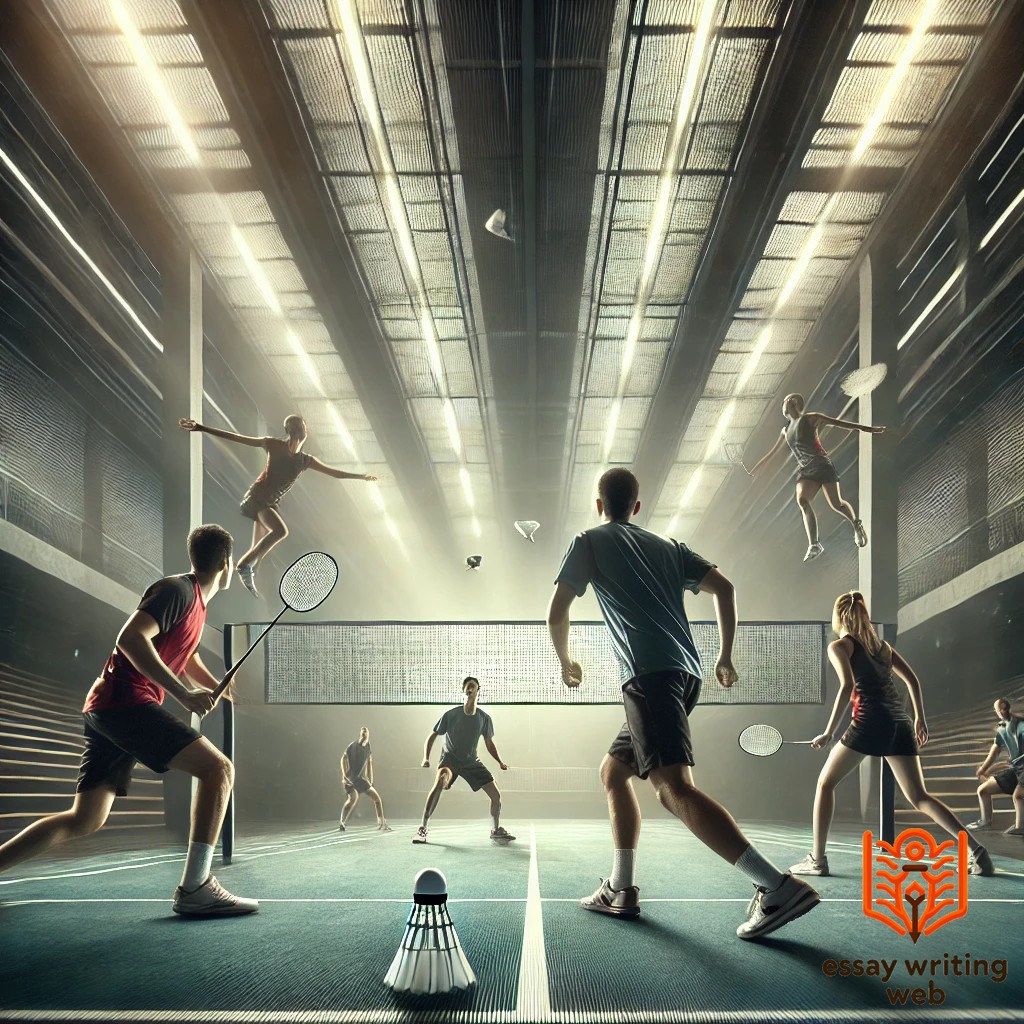
This format features one male and one female player on each team. The male player typically plays more aggressively, especially at the front and midcourt, while the female player focuses on setting up shots and covering specific parts of the court.


Badminton is a fast-paced and enjoyable sport that can be played by people of all ages. Whether you are playing casually or competitively, learning the basic rules and techniques is essential for mastering the game. Here’s a step-by-step guide to help you understand how to play badminton.
A badminton court is divided into two halves by a net, and it can be used for both singles and doubles play. The court is 13.4 meters long and 6.1 meters wide for doubles, while the width is reduced to 5.18 meters for singles. Each side of the court has a front service line and a back boundary line, which define the serving areas.
The game begins with a toss, and the winner of the toss chooses whether to serve or receive, or which side of the court to start on. A rally starts when the server hits the shuttlecock into the opponent's court, aiming for the opponent’s service area.
Once the shuttlecock is in play, the goal is to hit it over the net and into the opponent’s court. Players use various strokes, including forehand, backhand, smashes, and drops, to outmaneuver their opponent. A point is scored when:
A badminton match is typically played as the best of three games, with each game going up to 21 points. The player or team that wins the rally adds a point to their score. If both players or teams reach 20 points, the game continues until one side has a 2-point lead, but if the score reaches 29-29, the next point wins the game.
Badminton requires a mix of physical agility and precise control. Some of the key strokes include:
Good footwork is critical in badminton. Players need to move quickly around the court, maintaining balance while being ready to hit the shuttlecock. Keep your body in a low, athletic stance, and always try to return to the center of the court (the "base position") after each shot to cover the court effectively.